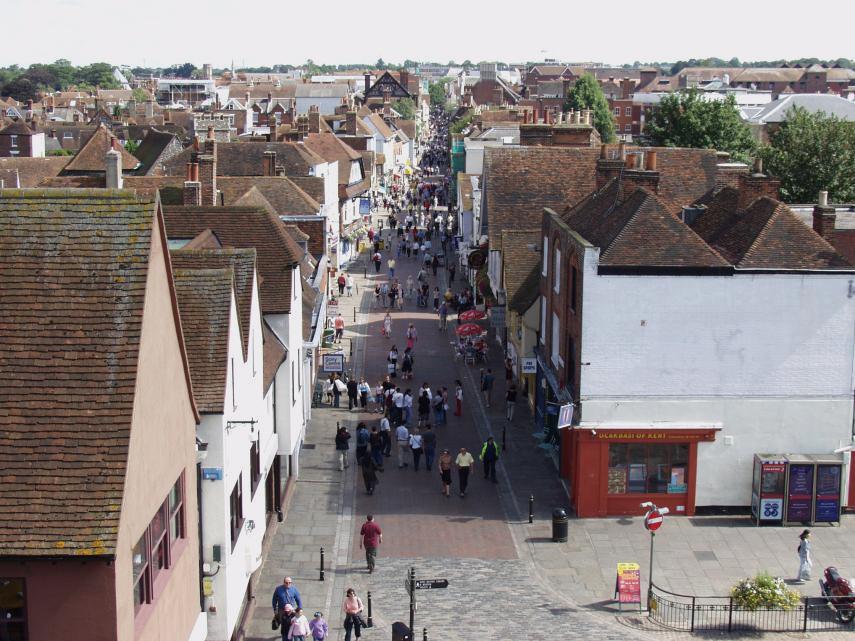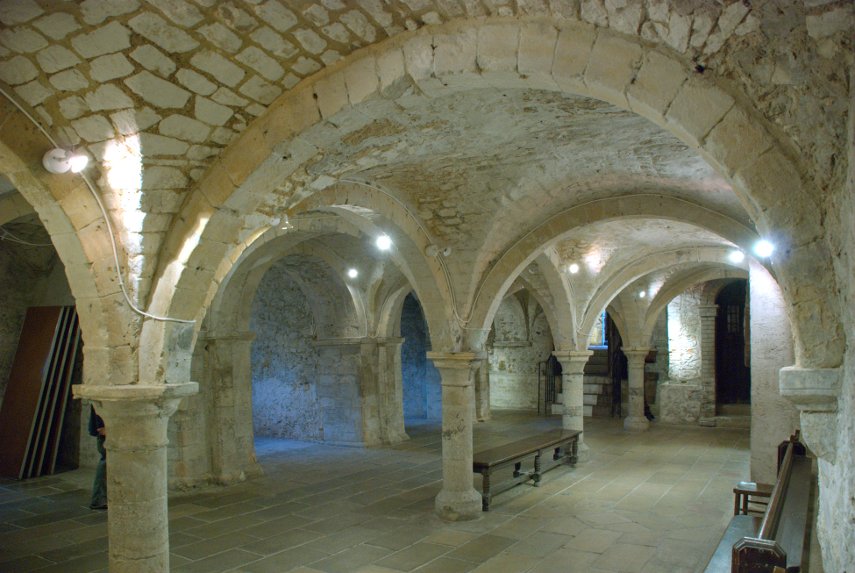
 DoneThat
DoneThat
Canterbury, Kent

Looking across the city from the battlements of Westgate Towers showing Canterbury Cathedral, from the West end, towering over the other buildings. The first Canterbury settlement dates to around 1 B.C. but it was very much later that it became a destination for pilgrims after Thomas Beckett, the then Archbishop of Canterbury, was murdered in 1170 by Henry II's knights.

| Comment |  |
 |
More cathedral views. |

These fortifications were obviously not designed for modern vehicles but an open top tour bus can just squeeze through, and before you ask, the bus was open topped before it went through the arch.
The towers are open to the public and the entrance is inside the archway. There is a small path to keep you out of the traffic.
| Comment | More Historic Buildings |

Looking along the main street through Canterbury.
This starts off as St. Peter's Street then, after passing over the River Stour by the Old Weavers Houses, changes to High Street at Best Lane by the County Hotel. After High Street the road becomes 'The Parade' for a short distance followed by St George's Street.
This stretch of road was once the main London to Dover road although it has now been pedestrianised.
| Comment | More street views |

Part of the old Canterbury Medieval Town Walls showing two of the guard towers.
This part of the city was bombed heavily during the last war and consequently has been mostly rebuilt.
Although the wall is interesting the view from the walkway on the top is not! There are, however, some other interesting sites in the vicinity such as the ruins of Canterbury Castle.
| Comment |

Situated in High Street Eastbridge Hospital is a hospital in the original sense of the word i.e. a place of hospitality and such places were also known as almshouses. It was founded in the 12th century to give shelter to such travellers as pilgrims and soldiers.
This showns the Undercroft where travellers would have slept.
| Comment | More of Eastbridge Hospital |
